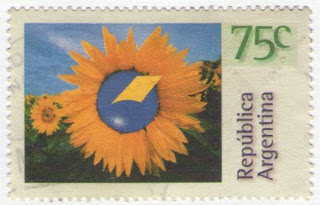GRANOS de ARROZ/GRAINS of RICE.
Fuente/Source: Foto Propia/Own Photo.
ARROZ
Se dedican muchas hectáreas al cultivo del arroz en el mundo. Se sabe que el 95% del cultivo de este cereal se extiende entre los paralelos 53º, latitud Norte, y 35º, latitud Sur. El origen del cultivo es objeto de controversia entre los investigadores; se discute su origen entre China e India.
Existen cerca de diez mil variedades de arroz. Todas ellas entran en una de las dos subespecies de Oryza sativa, la variedad índica, que suele cultivarse en los trópicos, y la japónica, que se puede encontrar tanto en los trópicos como en las zonas de clima templado y que se caracteriza por su alto contenido en almidón del tipo amilosa (arroz glutinoso). Por regla general, cuanto más amilosa contiene un grano de arroz, más temperatura, agua y tiempo requiere para su cocción.
La mayoría de arroces se «pulen» previamente para liberarlos de la cubierta que los protege (que se convierte en salvado), lo que elimina así aceites y enzimas del arroz. El resultado es un grano de arroz que se mantiene estable durante meses.
RICE
Rice (Arabic أرز, Ar-Ruzz) is the seed of the plant Oryza sativa. This is considered a staple cereal in many culinary cultures (especially Asian cuisine) as well as in parts of Latin America. Rice is the second most produced cereal in the world after maize. Because corn is produced with many other purposes other than human consumption, we can say that rice is the most important cereal for human consumption and contributes very effectively to energy intake in the human diet today. Rice is responsible for the caloric intake of one-fifth of the calories consumed worldwide by humans. Since 2008 there has been a rationing in some countries due to the shortage of rice. In countries like Bangladesh and Cambodia can represent almost three quarters of the power of the population. Many acres are devoted to rice in the world. It is known that 95% of rice cultivation extends between latitudes 53 ° north latitude and 35 ° south latitude. The origin of the crop is controversial among researchers, we discuss its origin from China and India. There are about ten thousand varieties of rice. They all fall into one of the two subspecies of Oryza sativa, variety Indica, which is usually grown in the tropics, and japonica, which can be found both in the tropics and in temperate zones and is characterized by its high starch content of amylose type (glutinous rice). Generally, the more amylose contains a grain of rice, over temperature, water and time required for cooking. Most rice is 'polished' prior to release of the cover that protects them (which becomes saved), which eliminates oils and enzymes in rice. The result is a grain of rice remains stable for months.
Fuente/Source: Wikipedia.
Posición/
Position
|
País/Country
|
Producción
(Tns.)/
Production (Tons)
|
Símbolo/ Symbol
|
1
|
China/China
|
197212010
|
|
2
|
India/India
|
120620000
|
|
3
|
Indonesia/Indonesia
|
66411500
|
|
4
|
Bangladesh/Bangladesh
|
49355000
|
*
|
5
|
Viet
Nam/Viet Nam
|
39988900
|
|
6
|
Myanmar/Myanmar
|
33204500
|
Im
|
7
|
Tailandia/Thailand
|
31597200
|
|
8
|
Filipinas/Philippines
|
15771700
|
|
9
|
Brasil/Brazil
|
11308900
|
|
10
|
Estados
Unidos de América/USA
|
11027000
|
|
11
|
Japón/Japan
|
10600000
|
*
|
12
|
Camboya/Cambodia
|
8245320
|
|
13
|
Pakistán/Pakistan
|
7235000
|
|
14
|
República de
Corea/Republic of Korea
|
5804000
|
*
|
15
|
Madagascar/
Madagascar
|
4737970
|
|
16
|
Egipto/Egypt
|
4329500
|
|
17
|
Sri
Lanka/Sri Lanka
|
4300620
|
|
18
|
Nepal/Nepal
|
4023820
|
|
19
|
Nigeria/Nigeria
|
3218760
|
|
20
|
República
Democrática Popular Lao/Lao PDR
|
3006000
|
*
|
* :
|
Cifras no
oficiales
|
[ ]:
|
Datos
oficiales
|
Im:
|
Datos de FAO
basados en una metodología de imputación
|
* :
|
Unofficial
figures
|
[ ]:
|
Official
data
|
Im:
|
FAO data based on an allocation methodology
|
Fuente/Source: FAO 2010.





















.jpg)
.jpg)
.jpg)
.jpg)
.jpg)






